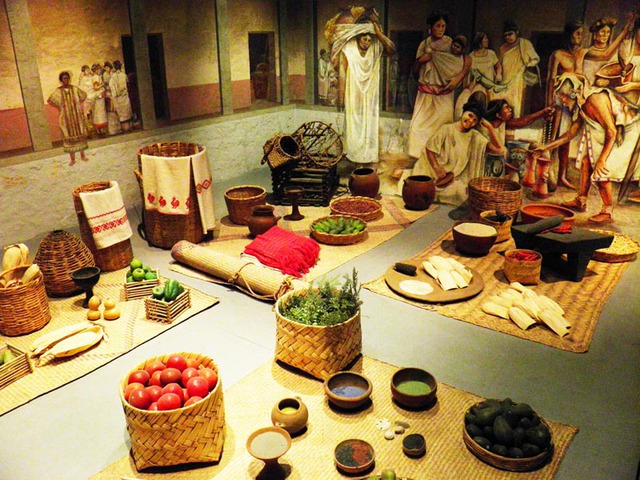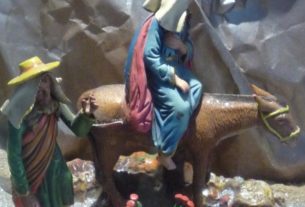Gareth Mason
1. Mexico City
On the way to Ecuador, I took a five-day diversion to Mexico City. As souvenirs, I picked up a stomach bug and a rather extreme case of sun-burn. Neither were timetabled, but both easily gained with the correct measure of self-neglect. I was respectively supported by a high altitude that increased the exposure of the sun on my milky white skin, and Mexico’s water supply – so bad that the country consumes over eight billion gallons of bottled water a year to avoid drinking from its taps.

The late afternoon rain was a more reliable water supply. In Britain, small talk often revolves around unpredictable weather, but here I was warned to be under shelter by a specific time each afternoon – about quarter to four if my hazy memory is correct. My skepticism on this matter proved unfounded – it arrived with a promptness that was far more European than Latin American. Water is also relevant to the modern city’s location. The Aztec city that preceded it was built on Lake Texcoco – one of five connected lakes once occupying an area of over 5,000 square kilometers (1,930 square miles). During the few centuries after conquest, it was drained to control its habitual flooding. Half a millennium later, the sand and clay underlying much of today’s capital make it particularly vulnerable to earthquakes.
~
I booked myself into a large and functional hotel a few kilometers from the Plaza de la Constitución – the Zócalo. Intimacy was lacking at the cold and expansive hotel reception. I was a single unit in a production line of guests – hundreds of whom were needed to cover the overheads and wages of its indifferent staff.
Many of these units were drawn from marching troops of teenagers. They were visiting the capital for a battle of the brass bands. The amateurish enthusiasm of the nation’s noisiest children combined with their visible and audible excitement at escaping the strictures of home. For my entire stay, scores of pimply youths beat their drums and blasted their trumpets, trombones, tubas, and flugelhorns with impunity. From soon after dawn to well beyond dusk, foyers, corridors, and lifts resonated to a cacophony unconfined by musical scores or conductor’s baton. At 3.00am on my first morning, I rang reception to complain – feeling like I was crossing a Rubicon into intolerant middle age.
The receptionist understood my Spanish, but not my problem
2. Teotihucan and The Avenue of the Dead
I visited the pyramids of Teotihuacan, some 50 kilometers north-east of the city. Built a millennium before the Aztecs, less is known about the empire behind these enormous structures than of the city states of the Olmecs, Toltecs and Zapotecs, whose own archaeological ruins are scattered widely across the nation.
All around the site, murals and hieroglyphics vividly depict a culture that is closely replicated in the ruins of the Maya in the cities of Tikal in Guatemala and Copán in Honduras. The far-flung boundaries of this multi-ethnic empire encouraged widespread trade – particularly in the export of the dark volcanic rock, obsidian. But its capital, Teotihuacan, was never lost in a jungle nor forgotten on some distant peak. The unmissable majesty of its 40-meter-wide Avenue of the Dead links the Pyramid of the Moon at one end to the Pyramid of the Sun and Temple of Quetzalcoatl four kilometers (2.5 miles) away at its far one.

The Pyramid of the Sun is one of the world’s largest. It’s most often quoted as being 66 meters (216 feet) tall with a volume of 1.2 million cubic meters and a base measuring 220 meters by 230 meters. A quick Google places it somewhere between third and seventh by volume in the all-time list with The Great Pyramid of Khufu and Mexico’s Pyramid of Cholula tending to head the podium. But while its compatriot in Cholula now resembles a giant grassy hill topped by a little church, the squat bulk of the Pyramid of the Sun stands nakedly proud. In recent decades, a tunnel and cave system was discovered 17 meters beneath it. It contained an ancient model of a mountainous landscape with pools of mercury representing lakes, and fool’s gold portraying the stars.
The 20-square-kilometer site was built over 2,000 years ago with the city reaching its height around AD 450. A great fire hastened its decline during the 7th or 8th century. The evocatively-named Spearthrower Owl is the best-known ruler from its golden era. With a population topping 250,000, Teotihuacan was almost certainly the biggest and most powerful city in the Americas. Time has wrought only the most superficial damage to the structures.
But in a matter of hours, my own exterior was suffering greatly. Neglecting to use sun-cream during my day out under the blazing sun, I seared myself lobster red. I was alerted to this on-going process midway through the day – much as one might tell a toad he should remove himself from the warming pot on the hob. Like him, I left the advice unheeded. For a few weeks, I had a new ‘look’ to accompany my new start on the other side of the world.
3. Tenochtitlan
In 1519, when Hernán Cortés arrived in Veracruz, the Aztecs had been ruling for over two centuries. Their empire of five million subjects extended over 200,000 square kilometers from the Caribbean to the Pacific. The Aztec capital, Tenochtitlan, was built on an island in the middle of Lake Texcoco, which once filled the valley. It is now inhabited by the massive modern metropolis of 20 million. Connected to the mainland by bridges and causeways, the ancient city was accessible by canoe or foot. Floating gardens produced food, while fresh spring-water was imported via two terracotta aqueducts.

Seeing it for the first time, some Spanish soldiers thought they were dreaming. Its population of 400,000 rivaled that of 16th century Paris, Venice and Constantinople – ten times that of London. Amongst the 45 public buildings at the center of the 13-square-kilometer island lay the Palace of Moctezuma with up to 300 rooms for its two-legged visitors and two zoos for the others. Links with the past pervade the present.
The ruins of the city were discovered in the heart of the new one in the early 1900s, but not excavated until 1978. The temple complex – or Templo Mayor – can now be glimpsed alongside the colonial buildings of religious and secular power including the foundations of three large pyramids that rose 60 meters in their glory. An Aztec prophecy commanded the people to build their capital where an eagle was seen holding a snake in its beak, while sitting atop a cactus. The Mexican national flag now contains this motif – something I couldn’t miss in the Zócalo one afternoon when a giant banner spanning ten meters was unfurled. The Spanish ensign is long gone.
~ ~ ~
This is an excerpt from Gareth Mason’s Rum ‘n’ Coca: Cautionary Tales from Latin America. Further details are available from the author’s website at www.garethmason.com/contact
Published or Updated on: 8 July 2021 by Gareth Mason © 2021



Found this Mexico private tour https://gowithguide.com/mexico/mexico-city Do you think it is worth it? Or would it be better to wander on foot?